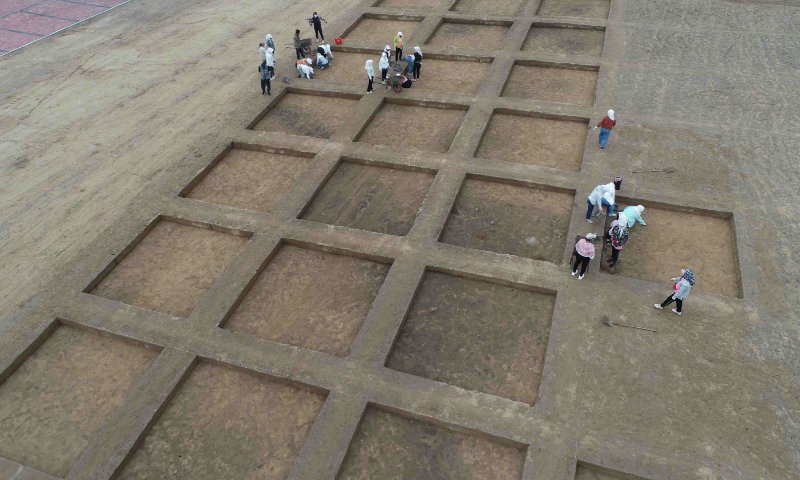In the expansive stretches of Northeast China’s Liaoning Province, a series of archaeological endeavors have been initiated, set to unveil the profound mysteries of the ancient Hongshan Culture. These explorations span across seven pivotal sites, each holding unique tales of a time long past.
Among these, the Ma’anqiao site in Chaoyang city stands out as an eminent ancient sacrificial ruin. Positioned about 60 kilometers away from the renowned Niulianghe site, Ma’anqiao is part of this grand 2023 exploration mission. The Niulianghe site, a significant late Neolithic archaeological marvel, was first unveiled to the world in 1981. Over the years, its expansive grounds have offered a plethora of findings, including precious jade artifacts and architectural remnants such as altars, painting a vivid picture of the ceremonial practices of yore. Archaeologist Xue Feng extols Niulianghe as a testament to the “emergence of primitive civilization”. The artifacts excavated from here hold invaluable insights for scholars delving into ancient Chinese ritual systems, religious history, and traditional design paradigms.
Taking charge of these ambitious excavations is the Liaoning Provincial Institute of Cultural Relics and Archaeology. Two particularly intriguing sites, the Cihuai Mountain Ruins and the Sanjia Dongbei Ruins, are slated for their maiden exploration later this year.
Both these sites are quintessential representatives of the Hongshan Culture. The Cihuai Mountain Ruins, spanning an impressive 120,000 square meters, promise to unveil a treasure trove of information. The primary objective of the archaeologists here is to delineate its intricate layout.
In contrast, the Sanjia Dongbei Ruins captivate with their distinct design. Perched atop a platform, the site has revealed relics like pottery and jade fragments scattered within a pit. A comparative research methodology will be employed, juxtaposing findings from Sanjia Dongbei with those from the Cihuai Mountain and Niulianghe sites. This holistic approach aims to construct a comprehensive blueprint of the region’s Hongshan heritage.
The significance of the Hongshan Culture in the annals of Chinese history cannot be overstated. Positioned as a symbol of one of the paramount origins of Chinese civilization, it blossomed predominantly along the West Liaohe River in the Inner Mongolia Autonomous Region.
Beyond the realms of the Hongshan Culture, the excavation initiative also encompasses the Qingshiling Mountain Ruins. Having been the focus of continuous archaeological efforts for nearly a decade, this site is replete with artifacts from the Gaogouli Culture, a vibrant ancient ethnic minority culture that flourished in China’s northeastern territories.
READ MORE:
